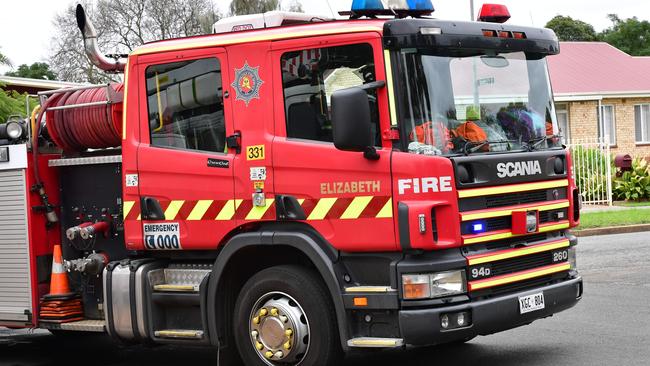The bus stops that Adelaide forgot
ANNOYED that your bus stops so often on the way to work? Check out this map, then tell the Government which stops to scrap.

SA News
Don't miss out on the headlines from SA News. Followed categories will be added to My News.
ON humble patches of dirt, beside lonely, darkened roadsides, near the end of outer suburban bus routes, the simple yellow signs wait. And wait.
They are Adelaide’s loneliest bus stops, where a waiting passenger is actually an annual event, rather than a daily routine.
Now the Government wants feedback from commuters on where bus stops should — or shouldn’t be — located.
The Advertiser has analysed data released by the Department of Planning, Transport and Infrastructure that shows we board buses more than 50 million times each year from more than 7000 stops across the city.

Along North Tce and King William St, hundreds of thousands of people step onto buses every year.
But just one passenger boarded buses at four locations — in Munno Para, Carey Gully, Mt George and Sellicks Beach — over the entire 2013-14 financial year. Their locations suggest they are almost certainly used more often for disembarking.
And almost 200 locations recorded an average of less than one boarding per week.
A Department of Planning, Transport and Infrastructure spokeswoman said the government tried to locate stops close to places of activity or places where passengers can transfer, at distances of around 300-400 metres.
“Most bus stops across Adelaide have been in their current locations for many, many years,” she said.
“(They were) located when tram lines were removed and bus services began.”
Quentin Zervaas, the South Australian founder of the TransitTimes+ app, which provides timetable information for more than 80 cities around the world, said the bus system in Adelaide could learn from networks in other cities.


“I’ve been processing the (Adelaide) data for five years or so,” he said.
“You want to make it as accessible as possible, but there are a lot of stops.”
Compared to other cities, Mr Zervaas said the inconsistent use of prefixes and suffixes on bus routes made it harder for tourists and irregular users to understand where buses went at a glance.
He suggested Adelaide Metro could incorporate compass directions like “SW” and “N” to describe the areas of the city serviced by the routes.
“The system seems to be more complicated than it needs to be,” he said.
The DPTI figures are the latest attempt at calculating bus usage in Adelaide, and were released as a “trial” data set on the government’s data website.
The Adelaide Metro bus network includes 7397 stops classified under 4165 location names, with around 3000 locations including more than one stop — for example, pick-ups on opposite sides of the road.
The DPTI spokeswoman said the government “continually monitored” where bus stops were located and is currently reviewing its customer information strategy.
“(The strategy) could include bus route numbering to improve the legibility and ease of understanding for the public.”
She also invited submissions from the public on where stops should be located via the DPTI website.
ABOUT THE DATA
The data was released as a “trial data set” on Data.sa.gov.au by DPTI, promising “the number of boardings that have occurred at each stop, for each trip of each route over a given week.” Although the listing suggests it includes public transport boardings generally, the data does not appear to include tram or train trips or stops.
The data covers approximately the 2013-14 financial year, broken down into weeks. Some stops share the same name, and those that do appear to be located nearby — for example across the road.
To create the below map, geographic coordinates were collected from stop listings on the Adelaide Metro website. Please email jackson.gothe-snape@news.com.au if the location of your stop needs adjusting.
BUSIEST ROUTE
The M44, which runs between Marion Centre Interchange and Golden Grove Village Interchange, is the city’s most popular bus route by total number of passengers — around 500,000 more for the year than the next busiest route.

MOST CROWDED ROUTE
However some services will run more often, meaning these routes aren’t necessarily the most crowded. The data does include a field described as “a unique identifier of trips”.
This field doesn’t seem to match the actual services run, based on timetable information on the Adelaide Metro website, but more popular routes do seem to have more “trips” in the data.
These are the routes with the most passengers per “trip”. Perhaps readers can help out here — is route 879, the school service between Woodside and Heathfield High School particularly crowded?

LEAST CROWDED ROUTE
At the other end of the scale, here are the 30 routes with the fewest passengers per “trip”. I have removed the routes which are not listed on the Adelaide Metro website.

BUSIEST STOPS
Stops in the city dominate the busiest stops, with three stops on King William St included in the top 10.

QUIET LOCATIONS
The four locations which recorded just one boarding, excluding abandoned and school bus stops, over 2013-14 are:
— 96 Alawoona Rd (near 34 Alawoona Rd, Munno Para)
— 134 Justs Rd (near 7 Justs Rd, Sellicks Beach)
— 27 Rangeview Rd (near LOT 2 Rangeview Dr, Carey Gully)
— 27B Rangeview Rd (near LOT 3 Rangeview Dr, Mt George)
BUSIEST WEEKS
A chart of boardings per week makes clear the effect of school holidays on public transport, with clear drops in July, October, Christmas and April.

If you enjoyed this data-driven story, please check out previous analysis on cycling and parking in Adelaide.
Got a tip? Email jackson.gothe-snape@news.com.au, like me on Facebook or follow me on Twitter.




